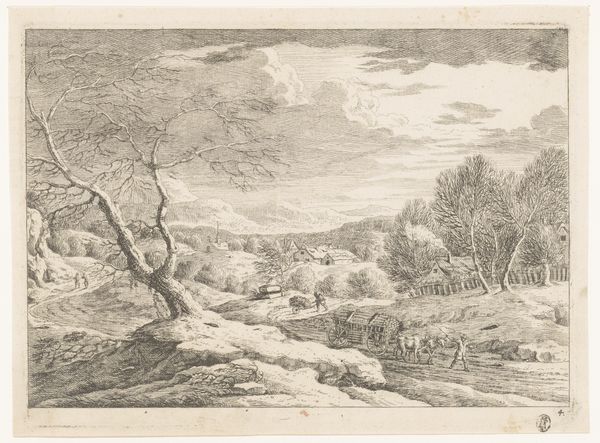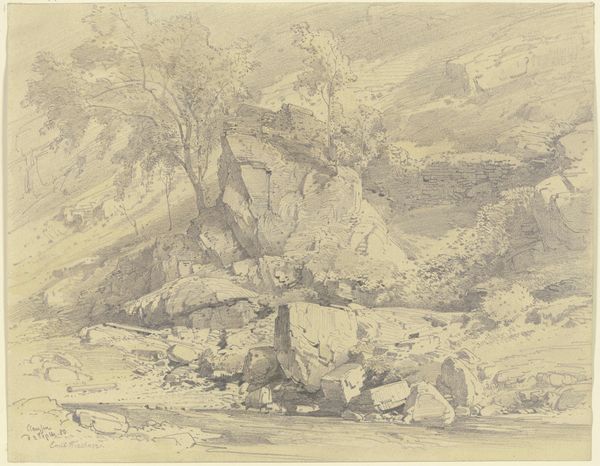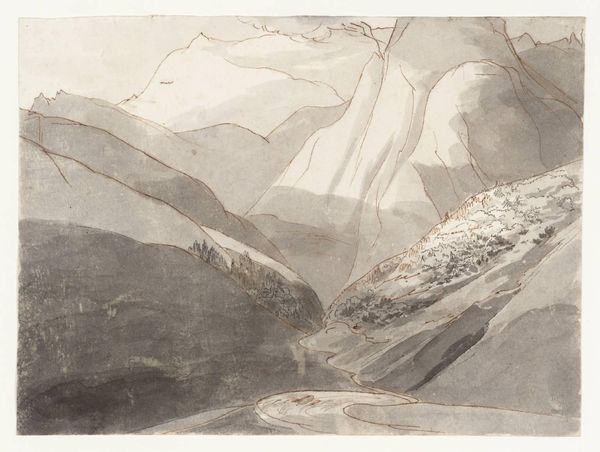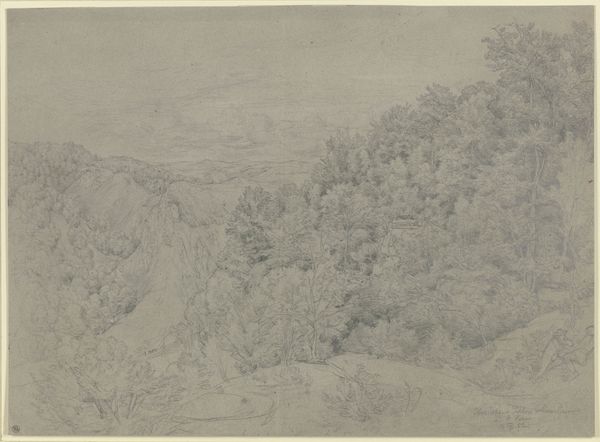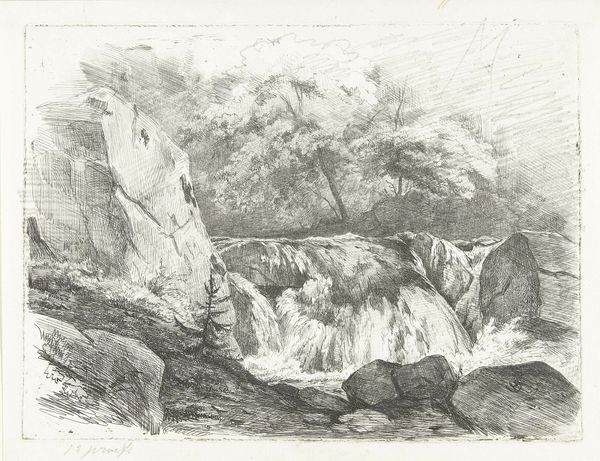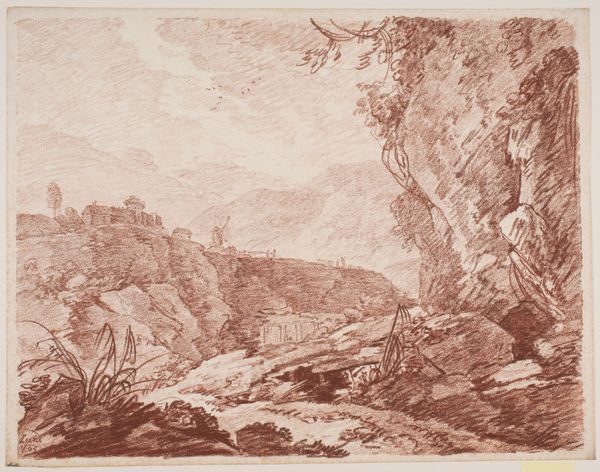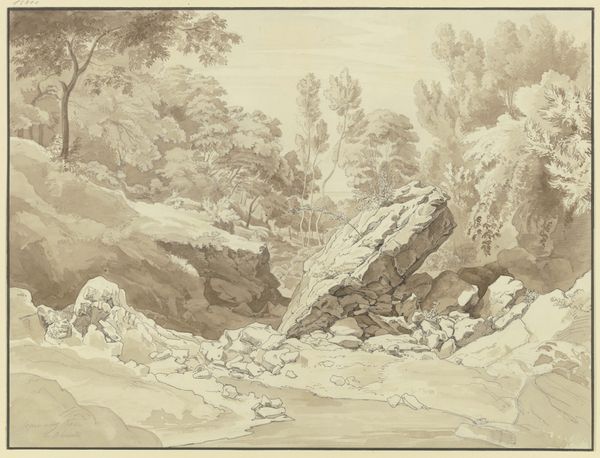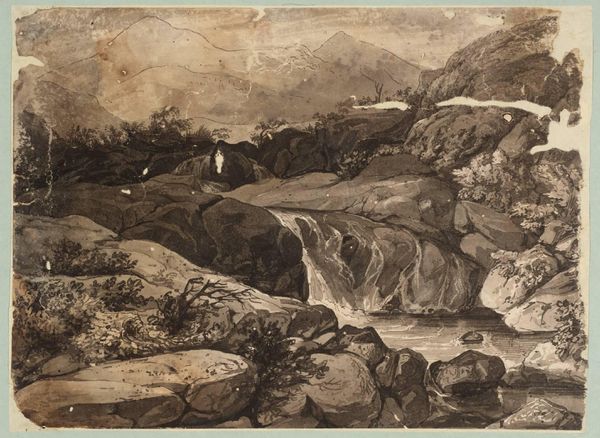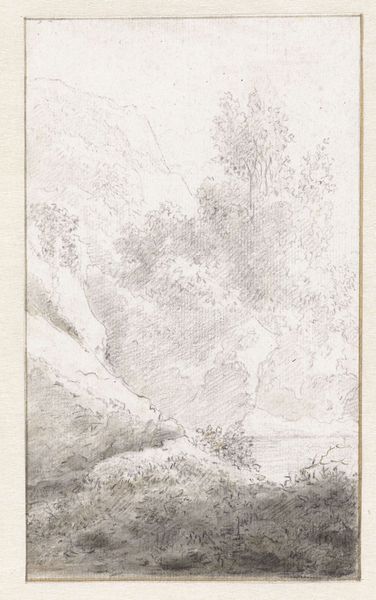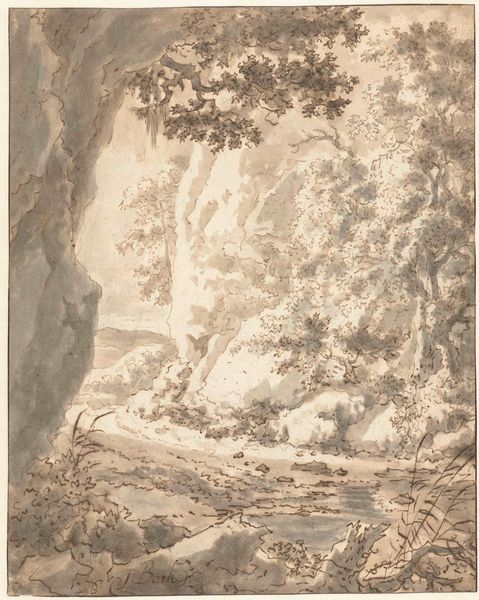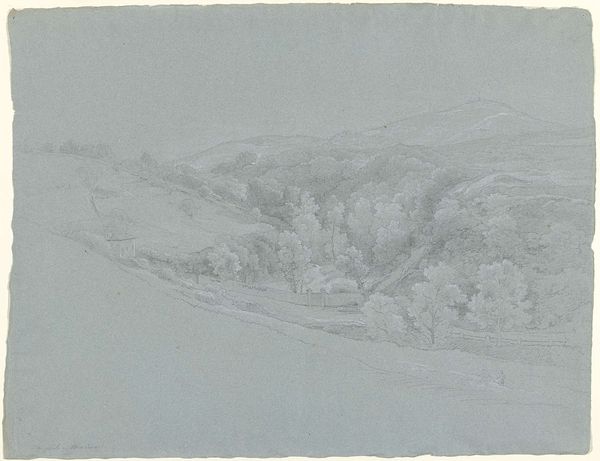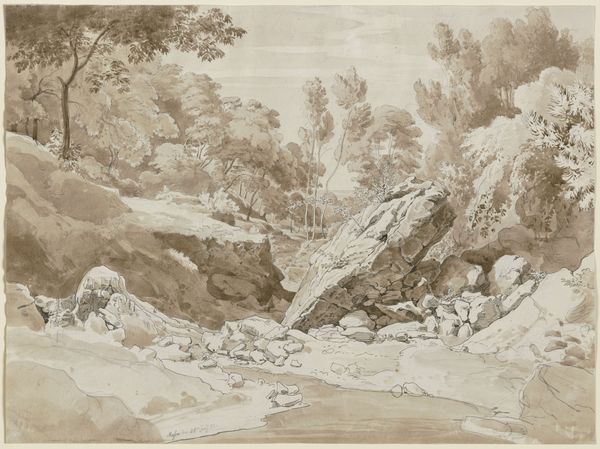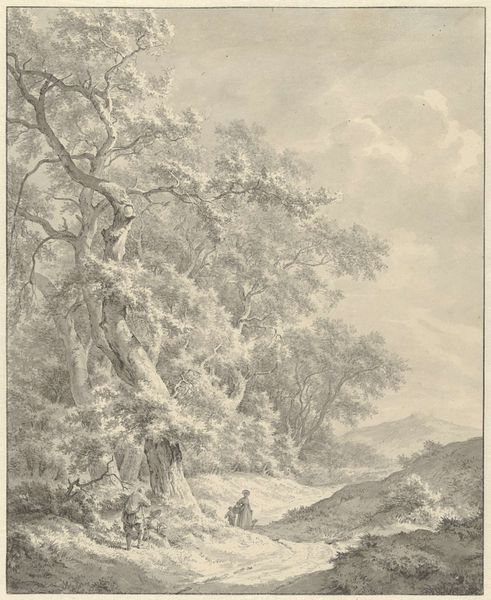
drawing, pencil
#
drawing
#
pencil sketch
#
landscape
#
waterfall
#
etching
#
organic drawing style
#
romanticism
#
mountain
#
pencil
#
realism
Dimensions: height 469 mm, width 633 mm
Copyright: Rijks Museum: Open Domain
Curator: Today, we're looking at "A Waterfall in the Mountains," a pencil drawing created by Abraham Teerlink sometime between 1786 and 1857. It’s currently held in the collection of the Rijksmuseum. Editor: My initial response is serenity. Despite the implied motion of the water, the consistent gray tonality lends a stillness, almost a contemplative quality to the whole composition. The way the artist utilizes hatching to describe form, volume, light is impressive. Curator: Waterfalls, you know, often symbolize the passage of time and the relentless force of nature. Considering Teerlink's era, that late 18th to mid-19th century span, the work aligns beautifully with the Romantic movement's fascination with nature's sublime power. This depiction isn’t just topographical; it invites reflection on humanity's place within the grand scheme of things. Editor: Yes, but look closely at how Teerlink uses contrasting textures. The rough, broken surfaces of the rocks and foliage against the smooth, flowing water creates an immediate visual and tactile tension. This could perhaps also function as an existential meditation, evoking both dynamism and stability. The soft, blurred background suggests depth and recession while contrasting to the intricate and tactile foreground. Curator: I like how you put that, this tension! Water, as a recurring symbol, embodies cleansing, renewal, but also potential chaos if uncontrolled. The mountains surrounding the waterfall— traditionally representing steadfastness and endurance, provide an interesting contextual counterpoint. The artist isn't merely presenting a pretty picture; he’s tapping into something profound that speaks to the interplay between transience and permanence. Editor: What stands out is its skillful rendering which offers an immediate aesthetic pleasure and allows to fully appreciate the naturalism. It's an almost meditative drawing that utilizes grayscale and soft values to focus more on shape, depth, form, and a realistic expression rather than intense expressive qualities. Curator: Exactly. And when we consider this piece through the lens of Romanticism's interest in heightened emotion and sensory experience, one may also consider the symbol of nature and its significance in defining the emotional and spiritual life of human beings. It presents to the viewer not only an image, but a silent dialogue between nature and ourselves. Editor: Indeed. Overall, I think Teerlink encourages us to look and feel in very interesting ways, demonstrating the depth that even a simple landscape sketch can embody when carefully structured.
Comments
No comments
Be the first to comment and join the conversation on the ultimate creative platform.
